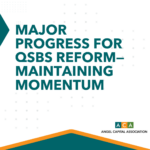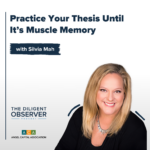Angel Insights Blog

Thursday, August 08, 2013
ACA Blog: The 20-Minute Premortem is Worth a Try for Angels
This post was written by John Huston, ACA Chairman Emeritus and Founder & Manager of Ohio TechAngels.
Like most ACA member groups, the Ohio TechAngel Funds (OTAF) conduct postmortems after our exits, regardless of whether they are positive or negative. From our positive exits, we’ve gleaned that even our best entrepreneurs have always fallen woefully short of their revenue projections. From the autopsies of our losing investments, we’ve realized that rarely had we missed major risks, but often grossly underweighted their likelihood, impact, or both. And, we had insufficiently discussed them with management to ensure all possible efforts were being taken to mitigate them.
Therefore OTAF added the premortem discipline to our due diligence process, making it a required step prior to recommending any investment. With the benefits greatly outweighing the time required, we are convinced there is a high return on this effort.
Project planning has exposed many executives to the premortem technique which is nicely explained by Gary A. Klein in his September 2007 Harvard Business Review piece entitled “Performing a Project Premortem”: http://hbr.org/2007/09/performing-a-project-premortem. In this article he states:
“Research conducted in 1989 by Deborah J. Mitchell, of the Wharton School; Jay Russo, of Cornell; and Nancy Pennington, of the University of Colorado, found that prospective hindsight…imagining that an event has already occurred….increases the ability to correctly identify reasons for future outcomes by 30%.”
In Enchanted, Guy Kawasaki mentions the premortem idea which he summarizes in this two minute video from one of his Stanford Business School lectures: http://www.youtube.com/watch?v=zN-PT8PYjTo. Daniel Kahneman, in his 2011 best seller (Thinking, Fast and Slow) states that “The main virtue of the premortem is that it legitimizes doubt.”
Finally, in Seeking Wisdom from Darwin to Munger, Peter Bevelin explains, ”we can reduce risk by increasing the number of wanted possible outcomes, reducing the number of unwanted possible outcomes, reducing the magnitude of consequences or avoiding certain situations.” By employing our premortem technique we hope to alert our entrepreneurs to three extremely prevalent errors which lead to flawed decisions:
1) Being oblivious to “Unknown Unknowns:” Made famous by Donald Rumsfeld in a 2002 press conference, this refers to issues and possibilities we totally overlook (e.g. the Pearl Harbor and 9/11 attacks). His point was that knowledge gaps can exist we aren’t aware of because we have failed to ask the right questions. Consider that there are three basic types of business questions. For the first type we are certain we know the answer (of course, we could be completely wrong, but once we think we know the answer we steam ahead basing future actions on the soundness of what we “know”). For the second, we have asked the question and are intently seeking the answer (which usually monopolizes our focus, such as testing a business model hypothesis). The third type refers to questions we don’t know enough to even consider asking them. We think by asking entrepreneurs questions they have not considered we are building our group’s “alpha.”
2) Confusing the unfamiliar with the improbable: The scarcest species on our planet might be the pessimistic entrepreneur. Those who have never experienced a business failure will discount its likelihood, despite data suggesting that the start-up failure rate approaches 50%. Our due diligence teams discuss failure’s probability with our entrepreneurs, many of whom have not experienced it. Nobel Prize-winning economist Thomas Snelling summarizes this propensity to downplay failure as follows:
“There is a tendency in our planning to confuse the unfamiliar with the improbable. The contingency we have not considered seriously looks strange; what looks strange is thought improbable; what is improbable need not be considered seriously.”
3) Decoupling frequency of outcomes from their magnitude: Living in a hundred year flood zone and not buying flood insurance is a good example of this type of error. The severity of a flood vastly overshadows its low likelihood. For events which would cause devastation, relying on historical probability is unwise. Most entrepreneurs are certain of their venture’s success right up until they must turn out the lights. By assuming the venture has failed the premortem prompts our entrepreneurs to reflect upon the personal impact consequences if that occurs. This seems to intensify their determination to win.
In short, the premortem can raise many interesting questions. Here’s how it works.
Step One: The due diligence team leader says, “Looking into my crystal ball, I see that one year from today this venture ceased operations. We’re going to devote the next five minutes to writing down the reasons we think this will have occurred. Then we’ll go around the room and ask everyone to provide their most likely reason. If yours has been mentioned when it is your turn, state your next most probable cause of death.”
Step Two: The leader writes down the reasons and summarizes them for the team.
Step Three: A discussion ensues about whether we should make additional due diligence requests, and whether other action steps are warranted (e.g. engage a Subject Matter Expert, pay for a deeper IP review, etc.).
Step Four: The leader presents the sanitized list (names deleted) to the entrepreneur, whose reactions are often quite illuminating.
Summary: Whenever they suffer a loss, many angel groups routinely conduct a postmortem, which some refer to as “Training via Tombstones.” The goal of the premortem is “Funeral Avoidance.” Our angel group is convinced we reap a high return on this 20 minute effort.
Tags:







